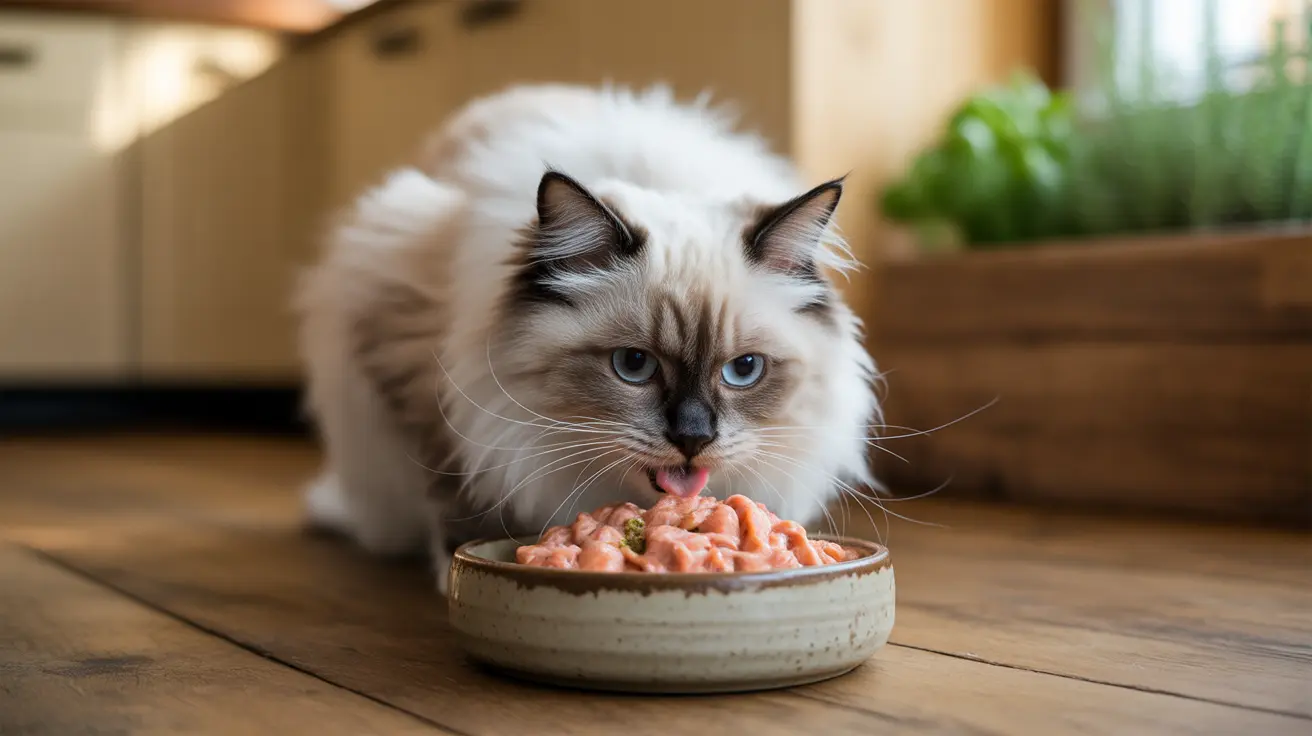Understanding Your Cat's Wet Food Preference
If you've noticed that your cat only eats wet food, you're not alone. Many cat owners find themselves puzzled by their feline friend's strong preference for wet food over dry kibble. This selective eating behavior is actually quite common and often has legitimate reasons behind it.
Understanding why your cat exclusively prefers wet food involves exploring various factors, including their natural instincts, physical needs, and sensory preferences. Let's dive deep into the science and behavioral aspects behind this common feline dietary choice.
The Natural Appeal of Wet Food
Cats are naturally drawn to wet food because it closely mimics their ancestral diet. With a sense of smell approximately 14 times stronger than humans, cats find the rich aroma of wet food particularly enticing. The moisture content and texture of wet food closely resemble what they would encounter when consuming prey in the wild.
The temperature and freshness of wet food also play crucial roles in its appeal. Room-temperature wet food releases more aromatic compounds, making it more attractive to cats' sensitive noses. This explains why many cats turn their nose up at refrigerated wet food but eagerly devour it once it's warmed to room temperature.
Health Benefits of a Wet Food Diet
A wet food diet offers several significant health advantages for cats. Most notably, wet food contains 70-80% moisture, which helps prevent dehydration and supports kidney function. This is particularly important since cats naturally have a low thirst drive and may not drink enough water when fed dry food alone.
Wet food typically contains higher levels of animal protein and fewer carbohydrates compared to dry kibble. This nutritional profile better matches cats' natural dietary needs as obligate carnivores. The higher protein content helps maintain lean muscle mass and supports overall health.
Medical and Age-Related Factors
Sometimes, a cat's preference for wet food stems from medical issues or age-related changes. Dental problems, missing teeth, or oral discomfort can make dry kibble challenging to eat. Senior cats may gravitate toward wet food due to decreased jaw strength or dental sensitivity.
Additionally, cats with certain health conditions, such as kidney disease or urinary tract issues, often benefit from the increased moisture content in wet food. If your cat suddenly switches to eating only wet food, it's worth consulting a veterinarian to rule out underlying health concerns.
Managing a Wet Food Diet
While feeding your cat exclusively wet food can be beneficial, it requires careful management. Proper portion control is essential since wet food is less calorie-dense than dry food. Store unused portions properly in the refrigerator and always serve at room temperature for optimal palatability.
Consider implementing a dental care routine, as cats on wet-food-only diets may be more prone to dental issues. This can include regular tooth brushing, dental treats, or professional cleanings as recommended by your veterinarian.
Frequently Asked Questions
Why does my cat only eat wet food and refuse dry kibble?
Cats often prefer wet food due to its stronger aroma, softer texture, and higher moisture content. This preference can be influenced by early feeding experiences, dental issues, or simply personal preference. Wet food's similarity to their natural prey makes it particularly appealing to cats' instincts.
Is feeding my cat only wet food healthier for hydration and kidney health?
Yes, wet food can be healthier for hydration and kidney health due to its high moisture content (70-80%). This additional moisture helps prevent dehydration and supports kidney function, particularly important since cats naturally don't drink much water.
How can I transition my cat from wet food to dry food without upsetting their stomach?
Gradually mix increasing amounts of dry food into their wet food over 7-10 days. Start with 25% dry food and 75% wet food, slowly adjusting the ratio until reaching the desired proportion. Always ensure fresh water is available.
What are common reasons cats lick only the jelly or gravy from their wet food?
Cats may lick only the gravy because it's the most flavorful part and easiest to eat. This behavior can indicate texture preferences or dental issues. Try different food textures or warming the food slightly to enhance its appeal.
Does a wet food-only diet increase dental problems in cats, and how can I prevent this?
While wet food alone doesn't cause dental problems, it doesn't provide the mechanical cleaning action of dry kibble. Prevent dental issues through regular tooth brushing, dental treats, and professional cleanings as recommended by your veterinarian.
Conclusion
A cat's preference for wet food is often rooted in natural instincts and can provide significant health benefits. While managing a wet food diet requires more effort and expense, the advantages for your cat's health and happiness often outweigh these considerations. Remember to consult with your veterinarian about your cat's specific dietary needs and maintain proper dental care routines.






